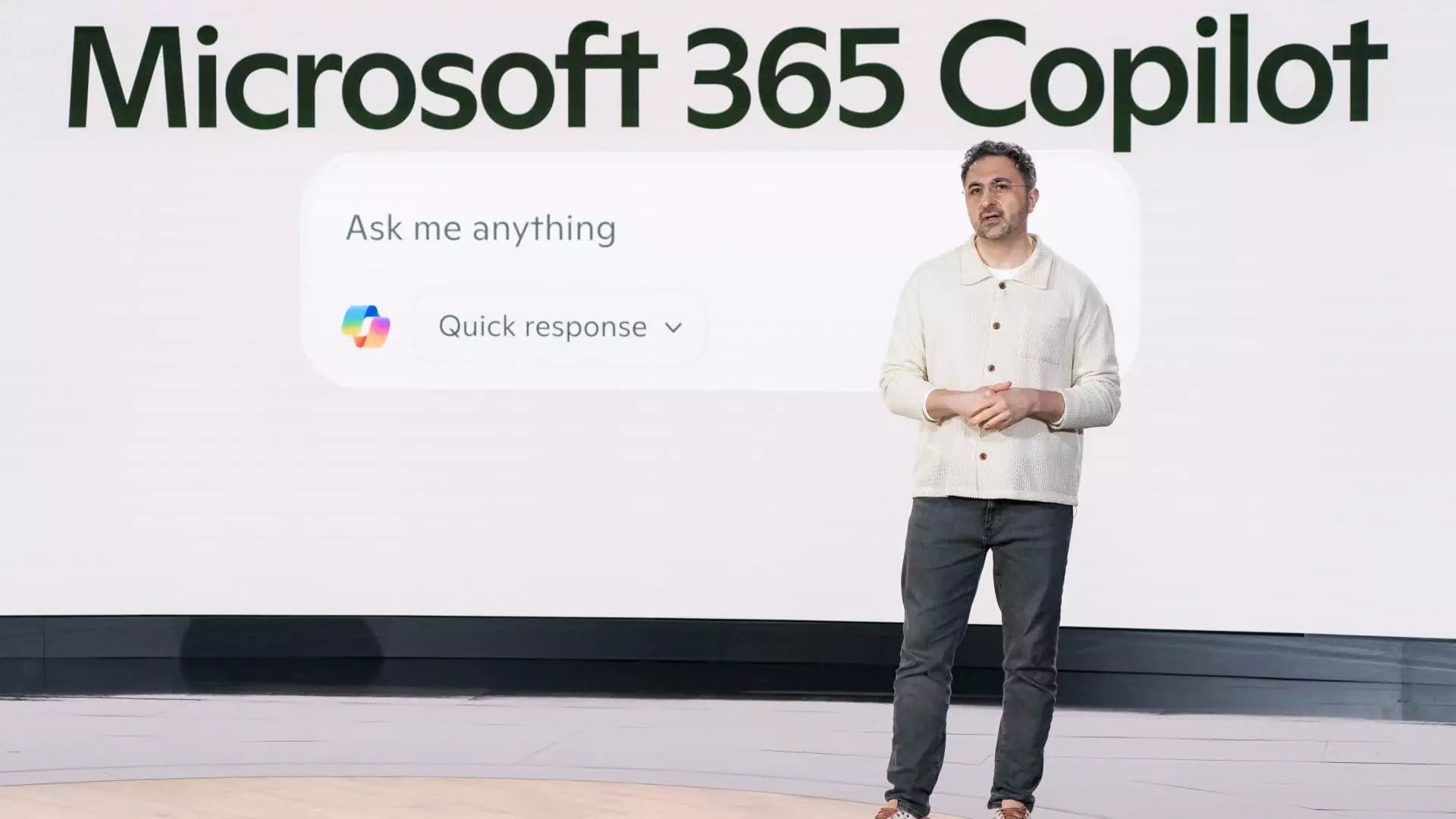In the rapidly evolving world of artificial intelligence, the scramble to harness advanced capabilities often resembles a frenzied race rather than a measured development process. Microsoft’s recent strategy, articulated by AI CEO Mustafa Suleyman, reflects a refreshing perspective that prioritizes long-term sustainability over immediate triumph. While competitors aggressively chase the latest breakthroughs, Microsoft adopts a more prudent approach—waiting for essential developments to settle before committing its resources. This strategy may appear counterintuitive to some, but when analyzed through a lens of fiscal responsibility and strategic foresight, it reveals a more profound understanding of the AI landscape’s complexities.
Suleyman’s emphasis on developing AI models that are “three or six months behind” those of competitors identifies a crucial insight: haste can lead to inflated costs and potentially flawed innovations. By waiting for the initial surge of advancements to unfold, Microsoft can avoid costly missteps often associated with novel technologies that have yet to be tested in practical applications. In a world where the financial stakes in artificial intelligence are climbing into the billions, letting others blaze the trail might just be the most rational choice.
Leveraging Collaborative Power
The importance of strategic partnerships cannot be underestimated, especially in a highly competitive and capital-intensive field like AI. Microsoft has established a long-standing relationship with OpenAI, one of the leading entities in this space, allocating a staggering $13.75 billion to fuel collaborative projects. However, recent developments signal potential shifts in perceptions within this partnership. As OpenAI begins to drape itself in the banner of competition, with alliances forming with other cloud providers such as Oracle, the outlines of a changing dynamic emerge.
Microsoft finds itself at a crossroads, acutely aware that self-sufficiency in AI infrastructure is no longer just a luxury; it is a necessity. Suleyman pointed out that developing capabilities internally is vital for long-term success. While the partnership with OpenAI had brought substantial gains, the specter of competition looms large. Thus, Microsoft’s pivot towards reinforcing its internal AI team demonstrates strategic pragmatism amid potential fragmentation in alliances.
Capital-Intensive Development Revisited
The advent of generative AI introduces a myriad of new possibilities but also places immense financial burdens on companies striving to remain competitive. As Suleyman acknowledged, building advanced models demands significant capital investment. Instead of squandering resources in a pursuit of the “absolute frontier,” Microsoft is prioritizing applicability and utility. This nuanced understanding positions the company to deliver tailored solutions that resonate with market needs rather than getting sidetracked by the excitement surrounding the latest innovations.
Moreover, Microsoft’s tendency to occasionally release open-source, lightweight AI models is another astute move. These models do not depend on the expensive computational resources that characterize stronger counterparts like OpenAI’s offerings. By doing so, Microsoft caters to a broader audience, enabling smaller developers and tech enthusiasts to engage with powerful AI technologies.
The Coexistence of Innovation and Intent
It is essential to recognize that the AI race is not merely about leading the pack but rather about ensuring that innovation aligns with intent. Suleyman’s assertion illustrates how Microsoft’s strategy is rooted in practical consideration rather than mere ambition. By cultivating a mindset that prioritizes structured feedback loops and iterative learning, Microsoft can cultivate products that genuinely address user needs rather than simply showcasing technological prowess.
This approach reflects a thoughtful understanding of the intrinsic nature of AI as a tool meant to enhance human capabilities. The developments in AI must be paralleled by ethical considerations and practical outcomes rather than driven by the thrill of rapid advancement. In this evolving narrative, Microsoft is not opting for an easy way out; rather, it is laying the groundwork for sustainable growth in a domain fraught with hype and volatility.
As the AI landscape continues to shift, Microsoft’s strategy serves as a reminder that some of the most significant achievements are born not from relentless speed but from thoughtful reflection, strategic patience, and a commitment to purposeful innovation.

